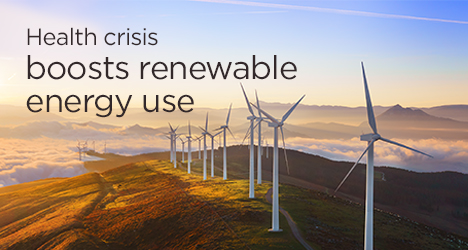The use of renewable energy rose in the US during the current public health crisis, according to a report from the International Energy Agency (IEA) and an article from the World Economic Forum (WEF). Renewable energy demand jumped 40% at six weeks into the crisis. According to the article, demand for renewable energy jumped by 45% in India and a little more than 20% in China.
Why the jump in demand? Lockdowns cut overall energy use, reducing the need for non-renewable sources of energy. Demand for electricity fell by as much as 30%, according to the article. Grid operators turned to low cost, cleaner sources—like wind and solar—instead of non-renewable sources. This happened even though fossil fuel prices were low.
The benefits of less fossil fuel use were obvious to everyone—not just grid operators. Many news outlets reported on the fact that lockdowns reduced air pollution. People drove less, and car emissions fell. That cause-and-effect relationship was obvious. The WEF article points to something less widely noticed: We’re using a higher percentage of non-renewable energy overall.
“Seeing less pollution makes the benefits of renewables clearer,” says Blymyer President Mike Rantz. “Businesses used less power, people drove less, and many public buildings closed. All of that led to increased renewable energy use as a percentage of consumption. Consider the benefits of increasing renewable production. We’d see those wins on days of normal power use.”
Big returns on investments in tomorrow
Investments in renewable energy deliver strong financial returns—not just environmental ones. A report from the Imperial College Business School recently found that renewable energy companies delivered higher returns than those in non-renewable energy sectors.
“As reopening activity increases, it’s likely that pollution will increase too,” says Rantz. “As the Imperial College report shows, renewable energy makes good economic sense. But the dramatic impact of less pollution caught everyone’s attention. I hope that inspires people to build more renewable energy production capacity and storage.”
